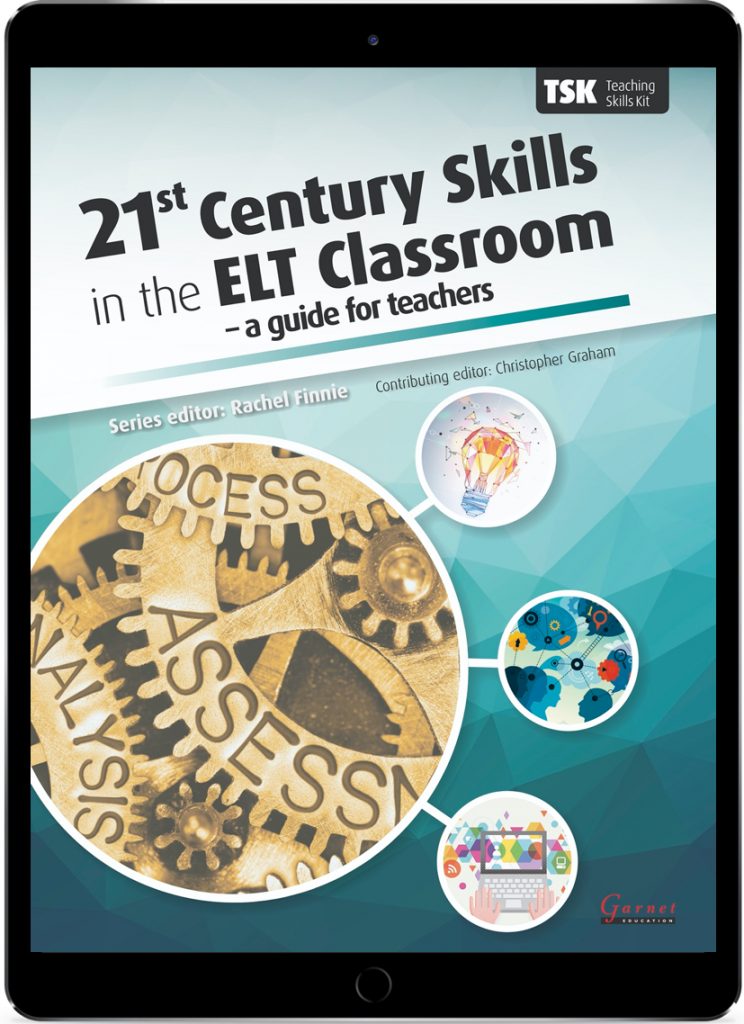
Welcome to our new three-part blog series about the life cycle of an ELT book, specifically our new book, 21st Century Skills in the ELT Classroom – A Guide for Teachers, which you can buy here. Each week we’ll be taking you behind the scenes of the publishing process and giving you an insight into the stages a book goes through, from conception to print, before it’s published. For part 1 of the series, we spoke to our Publisher, Rachel, and Contributing Editor, Chris, about how the initial idea for the book first came to be and the editorial process that followed. Keep reading to find out more!
Conception and manuscript | EDITORIAL
Rachel, Publisher
In the world of ELT, books can be ‘born’ in various ways – ideas arise from the overall needs of the publishing plan, market requirements, alliances with Ministries of Education or other academic partners, pedagogical trends, or simple in-house, team discussions.
Our new Teaching Skills Kit [TSK] series actually started life as a round-table senior management team discussion, where one of our consultants, Christopher Graham, proposed the idea of a new Garnet series specifically aimed at supporting teachers.
Chris, Contributing Editor
The original impetus for the book came from a series of professional development workshops I did in some universities in the Middle East, around the theme of 21st century skills. It was during the time that these skills were being interwoven into secondary, and particularly adult, ELT coursebooks around the world as part of an ongoing process of aligning ELT content to the needs of the workplace and places of study.

There was however a problem with these workshops, well several problems actually. The teachers, while they had been told that 21st century skills were now part of their course books, knew no more than that. I remember asking one group to brainstorm what the skills were and how they might be useful to their students, and seeing a collection of blank faces and lots of fingers furiously punching ‘21st century skills’ into their smartphones.
There seemed to be a number of areas of concern, including: What are the specific skills and sub-skills? Why are they relevant to EFL students in terms of day-to-day application? How can they be integrated into ELT content? What are the challenges of 21st century skills in ELT? Will I be trained how to do all of this? But aren’t I just an English teacher? How does this influence my teaching? Can we assess these skills?
These questions and others seemed to be a useful outline for a rather timely book for teachers, so the conversation with Garnet Education began.

Rachel, Publisher
Once the idea had been agreed in principle, we set about developing the concept – the purpose of the book, its target readership, the ‘fit’ of the book within current educational thinking, the broad brushstrokes for content and, last but by no means least, who would write it!
This all sounds fairly simple, but in fact takes a considerable amount of time to achieve. It involves detailed research, lots of discussion to establish and test out the concept, and a good deal of planning. Garnet is a relatively small company, and this is a huge advantage when it comes to creating new books or courses, as we can be very agile in terms of making decisions and actioning new plans. Therefore, we were able to establish the concept and outline the content fairly quickly.
Chris, Contributing Editor
I started to map out specific chapters and put names, faces and the skills sets of my contacts, (and some from the publishing team), next to them as potential writers. It was useful to have informal conversations with both potential writers and the editorial team first, and to then follow this up with the actual proposal. This makes final agreement much easier to reach. As the project outline became firm and writers agreed to go ahead, author briefs were sent out and as the deadlines approached, the first draft chapters began to arrive. It was starting to look like a book!
Rachel, Publisher
With the author team in place, and Christopher Graham taking the role of Contributing Editor, writing could begin. That’s always an exciting, if slightly nerve-racking, time.

Initially we had sample units, at which stage the design team brought their expertise to the party, working alongside editorial in creating page design to establish the ‘look’ of the book. They also started developing ideas for cover design. As the content creation progressed through draft manuscript stages, our publishing assistant was busy in the background acquiring images and securing permissions. This stage of book creation is very much a whole-team effort.
Overall, the writing and amending process generally involves a lot of to-ing and fro-ing between authors and editors, with manuscripts and feedback comments. This can go on over months, or in some instances, years. However, in this particular case, our lovely authors made the process very easy, as they produced such great material.
At the stage of full and final manuscript, with all content edited and agreed, the editorial team hands their precious content over to the design team, for the production of proof pages.


